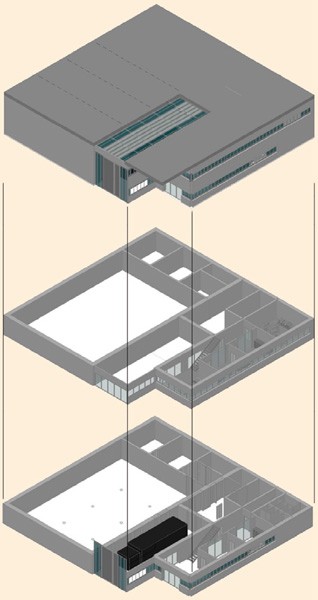
Individual modular elements.
There is a lack of suitable depots that meet the requirements of sustainability and energy efficiency as well as those of conservation.
more info
Individual modular elements.
There is a lack of suitable depots that meet the requirements of sustainability and energy efficiency as well as those of conservation.
more info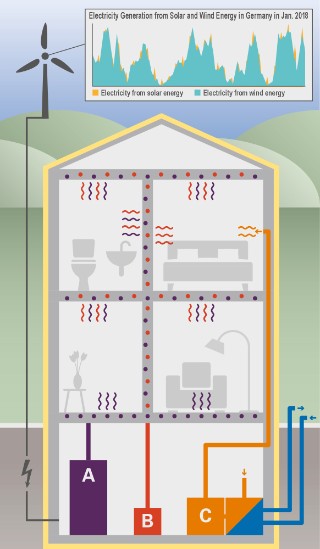
Possible solutions for using a building with wind-powered heating 2.0 with a large hot water storage tank (A), building component activation (B) and a central high-temperature stone storage tank (C).
The aim of the research study is to develop concepts for »Buildings heated by wind-power«, which are heated during periods of strong wind only.
more info
Sanssouci Palace Park - input data for the PALM-4U simulation (left) and simulated heat load on a hot summer's day (right).
Cultural assets are critical socio-cultural infrastructures whose services contribute to Germany's economic development and competitiveness and promote the community. However, the increase in extreme weather events due to climate change poses a threat to these infrastructures, such as historic buildings & gardens and cultural landscapes. The BMBF-SiFo project “KERES” therefore studied future extreme weather events and their effects on our cultural heritage in Germany, and used models to examine these scenarios.
more info
PACFAST enables the carbon footprint / LCA of packaging to be calculated efficiently.
Life cycle assessments are generally relatively complex and, depending on the objective and scope of study, call for a high level of expertise. Our collaboration with Institut cyclos-HTP has resulted in an important milestone on the way to calculating the carbon footprint (CF) of packaging quickly and efficiently. The application, called PACFAST (Packaging Carbon Footprint Fast and Standardised), uses an automatically generated file in CHI-RA that contains relevant packaging specifications for calculating the carbon footprint of the packaging in question.
more info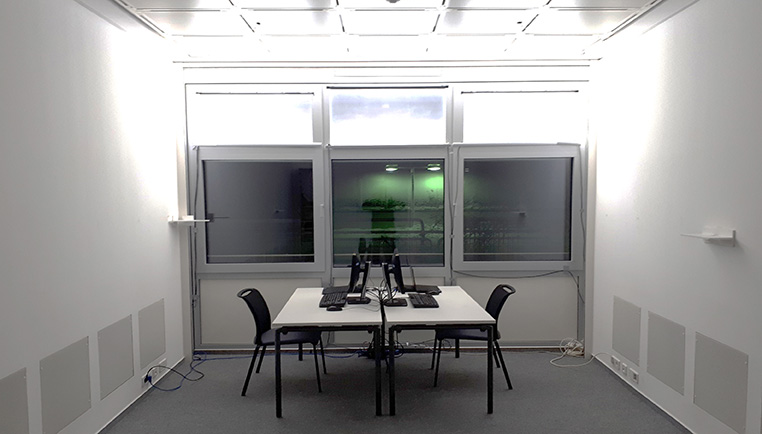
Artificial skylight in twin rooms
The aim of the project is to improve the building energy performance, the life cycle balance and the quality of indoor environments by using micro-structured optical components for daylighting and electrical lighting applications.
more info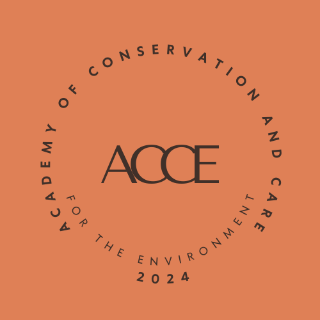
In pursuit of safeguarding the values of the UNESCO World Heritage site of Petra (Jordan) given the challenges of rapid societal and climatic change, the Academy of Conservation and Care for the Environment 2024 (ACCE) aims to foster national and international knowledge exchange among post graduate students and young professionals. ACCE is building a platform for emerging young professionals to come together and participate in workshops at the intersection of natural and cultural heritage environments, by learning from and working with the communities entrusted with their care.
more info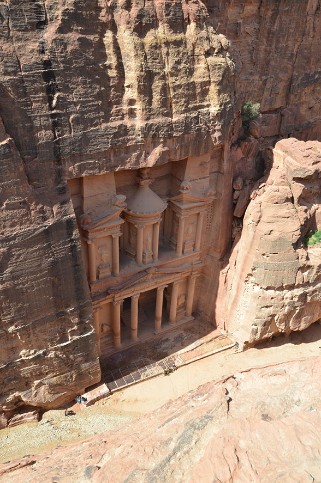
»Die Schatzkammer« in Petra von oben.
To support the sustainable conservation of the cultural heritage site of Petra, the Fraunhofer IBP together with local stakeholders, is developing a concept for a local education and training program.
more info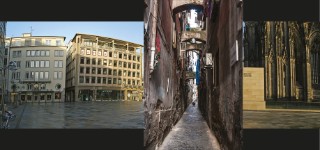
In order to contend with extreme and imminent climate change, and to sustain cultural cohesion in the inhospitable environments that may result, we need to learn how to adapt and live with extremes by embracing climatically appropriate architecture and infrastructure. Combining the sciences and the arts, The Consortium for Climate-Adapted Architectural Heritage forecasts future climates in terms of geographically-based climate analogs – elucidating the future climate of any given location by identifying places that currently have the anticipated climate conditions – helping communities to adapt to climate change through preemptive modification of the built environment.
more info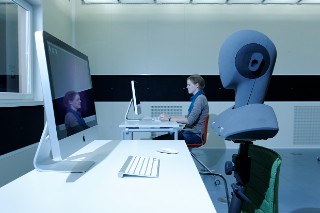
Test setup in the HiPIE laboratory in Stuttgart.
The HiPIE laboratory enables the conditioning of the environmental conditions acoustics, lighting, room climate and air quality on a room area of approx. 45 sqm.
more info